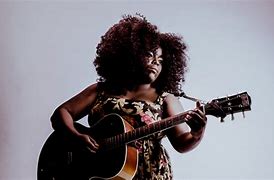PICKING THEIR FAVOURITE DYLAN
PICKING THEIR FAVOURITE DYLAN
by Norman Warwick

When Dave Simpson recently interviewed a number of top musicians who have covered Dylan tracks and asked them which track of his might be their favourite he not only unsurprisingly collected titles that represented a wide range of Dylan´s styles but also allowed their choice to reveal something of themselves as artists.
Mick Jagger 1 Desolation Row (1965)
The Rolling Stones front man. Mick Jagger, has often seemed to me a Mr. Tambourine Man in his crowd-leading antics on stage, but his selection, instead, of his favourite Dylan track as being Desolation Row made some sense as he explained for the Guardian writer

´I was playing Bob Dylan records at my parents’ house when he was still an acoustic folk singer, but he was already very important and his lyrics were on point. The delivery isn’t just the words, it’s the accentuation and the moods and twists he puts on them. His greatness lies in the body of work. I was at a session for Blood on the Tracks [1975] and really enjoyed watching him record Lily, Rosemary and the Jack of Hearts, with this incredible depth of storyline, surrounded by all these boring people from the record company who he had sitting in the control room. I couldn’t record like that´.
Desolation Row’s lyrics are just so interesting and diverse. It isn’t a real street so you create your own fantasy. I imagine an unforgiving place, somewhere you don’t want to spend much time, peopled with strange characters. The opening line about the “postcards of the hanging” sets the tone, but then this awful event is juxtaposed with “the beauty parlour filled with sailors” and all these circus people. The lines “The agents and the superhuman crew / Come out and round up everyone that knows more than they do / Then they bring them to the factory where the heart-attack machine is strapped across their shoulders” are scary and apocalyptic, viciously delivered.
My reading is that that’s about governmental, military control, but then there’s the payoff: “When you asked me how I was doing, was that some kind of joke? Don’t send me no more letters unless you mail them from Desolation Row.” That sounds like a really personal thing. Musically, he prettifies it. I love the lovely half-Spanish guitar lines from the session guitarist, Charlie McCoy. It’s actually a really lovely song, which shouldn’t work with the imagery but does. You can listen to it all the time and still get something wonderful and new from it.´
Judy Collins 2 Bob Dylan’s Dream (1963)

Judy Collins (left) knew Dylan so way back when that the sixties had not then been born, so it is perhaps no surprise that her favourite Dylan track comes from his early songbooks.
¨I met Bob in Denver in summer 1959, when he was still called Robert Zimmerman. Then he came to see me in Colorado and, as he still reminds me, sat at my feet. Back then, he was always trying to get slots on the hootenannies and sang Woody Guthrie songs very badly. He was a nice guy. We’d get drunk together. He was homeless, so would sleep on people’s floors, devouring their books. Then in 1961 folk bible Sing Out! printed the lyrics to Blowin’ in the Wind, by which time he’d changed his name, and I was astonished. Soon after that I sat outside a blue door in the basement of a party in Woodstock listening to him playing Mr Tambourine Man over and over again. It was a moment I’ll never forget.
I’ve sung lots of his songs, but my favourite is Bob Dylan’s Dream. [British folk singer] Martin Carthy had taught him the melody of a traditional song called Lady Franklin’s Lament, the story of the North West Passage, but Bob’s lyrics transform it into something personal and dreamlike that’s always haunted me. [Sings] “While riding on a train goin’ west / I fell asleep for to take my rest …” By then I was a raging Dylan fan. I once saw him at Madison Square Garden when I was very drunk and when a policeman tried to stop me getting backstage I actually slugged him, but not hard, with my purse´.
Marianne Faithfull 3 It’s All Over Now, Baby Blue (1966)

Marianne Faithful (right) and Mr. Dylan have been friends for 56 years.
´I really like him. I first met Bob at the Savoy in 1965. There’s a clip of me and Joan Baez singing As Tears Go By in the hotel room while Bob is hammering away on a typewriter. Later when I turned him down, he told me that it had been a poem about me, but he’d torn it up. I was so upset, but we got over that.
I think It’s All Over Now, Baby Blue is about those times in life where you just have to say, “OK, we tried, it didn’t work”, but it’s a much sleeker way of saying it. It’s very loving, but obviously it’s all over. I don’t really know why I love it so much, but I’ve been in many situations where I would have liked to have time stop and have a band playing and sing that song to people.
I’ve recorded it twice. The second time, I’d had more experiences and really felt it. I love the way his songs change octaves. I’m suffering long Covid and my voice is cracked, but I’m trying to recover it by singing It’s All Over Now, Baby Blue.
Yola 4 Corrina, Corrina (1963)

photo 5 Yolanda Quartey (born 31 July 1983), known professionally as Yola or Yola Carter, is an Englishmusician, singer and songwriter from Bristol, England.Yola received four nominations at the 62nd Grammy Awards, including the all-genre Best New Artist category. She chose Corrina, Corrina, from Dylan´s second album, The Freewheelin’ Bob Dylan.
´It’s his adaptation of a country blues song written in 1928´, she reminded Mr. Simpson ´but what gets me is his beautiful delivery. He sings it in the same tone he sings Lay Lady Lay [1969], almost a speaking style. It’s a song about someone he wants to come home and there’s real delicacy in his voice. He’s thought of as a folk singer but the blues are another foundation of his career, and you can hear him starting to flex his vocal muscles and finding ways of using his voice so you can hear every word.
Tom Jones 5 Blowin’ In Yhe Wind (1962)´
Given that Tom Jones has been around the top of the UK album charts for the past few weeks with his excellent album, Surrounded By Time, which we reviewed on these pages on 13th May 2021, I was interested to hear the choice of The Voice.

´I was on tour in the States in the summer of ’65,´ Jones recalled, ´with a British act, Peter and Gordon. Gordon Waller was a huge Dylan fan and played his records in the Holiday Inns. I wasn’t struck by Dylan’s voice at first but then I heard Blowin’ In The Wind and I’ve been a fan ever since. The lyrics are fantastic. He’s basically asking, “How many times do we have to go through all this shit before we realise that we’re fucking up the world?” He paints pictures with his songs so you can see things happening. It’s the same with What Good Am I [1989], which I’ve recorded. What good am I if I just stand by and let things happen that I know I should be changing? He was the first singer-songwriter to make me think´.
Suzanne Vega 6 A Hard Rain’s a-Gonna Fall (1963)

Singer writer, Suzanne Vega, (left) also extolled the virtue of Dylan´s lyrics, when explaining her choice of A Hard Rain´s A-Gonna Fall.
´This song is so prophetic that it still speaks to the age we live in today. Lines such as, “I saw guns and sharp swords in the hands of young children” or “the pellets of poison are flooding their waters” are now facts found in today’s newspapers. Other lines are the embodiment of mystery. The imagery in “I saw a white ladder all covered with water” will always haunt me, along with “I saw a black branch with blood that kept dripping.” Each image stands alone, a miniature painting, a snapshot in the landscape of the soul. Still filled with power, needing no explanation.
Gillian Welch 7 Ballad Of A Thin Man (1965)´
In announcing her selection of Ballad of A Thin man as her favourite Dylan track American artist Gillian Welch recalled the first Dylan purchase she ever made.

´I bought my first Dylan record – The Times They Are a-Changing [1964] – when I was 17, but to experience those early records in real time as he was releasing them must have been like being around when Shakespeare was creating new plays. Ballad Of A Thin Man typifies the way Dylan’s songs shine a spotlight on the world and human truths. The derision in his finger-pointing at Mr Jones [“Something is happening and you don’t know what it is, do you?”] instilled in me at a young age that I did not want to be the person that didn’t understand or he’s calling out – the judge, the man in power. You want to be the person who knows what’s up. This song changed my life´.
Wayne Coyne, the Flaming Lips
8 It’s Alright Ma (I’m Only Bleeding)

Simpson also interviewed Wayne Coyne, (left) of Flamin Lips, another artist we have covered on these pages on 19th November 2020, and his response, like all the others, made interesting reading for me.
Of It´s Alright Ma, I´m Only Bleeding, he said, ¨I heard this in 1971, by which time we’d been through Woodstock, Vietnam and the hippie era and he was already hailed as a genius. My 10-year-old ears agreed. I loved the line, “They made everything from toy guns that spark to flesh-coloured Christs that glow in the dark.” I had no idea what he was talking about, but I wanted a flesh-coloured Christ. It sounded cool. As I’ve got older the song sounds even better. My favourite Dylan is when he’s pissed off and he knows he’s right. It’s such a remarkable torrent of lyrics. It feels like it could go on for hours and not lose the energy. People didn’t stop war because of Dylan. They all started singing about war being wrong, but his legacy is intact before he’s dead. I think that in 200 years, no one will want to be an Adolf Hitler or a Donald Trump. They’ll want to be a Bob Dylan.´
Billy Bragg 9 Mr Tambourine Man (1965)
In 1972, BilIy Bragg, the punk folkie form the UK who did so much to perpetuate Guthrie´s legacy had a Saturday job in a hardware shop that had a record store in the basement. He has fond memories of the place.

´One day the guys there put on Dylan’s Greatest Hits. I’d heard the Byrds’ version of Tambourine Man but they only used one verse. Hearing the full four verses aged 14 blew my mind. Dylan gave me the blueprint for my career of a solitary figure on stage, holding a mirror up to the world and the idea that a song can’t change the world but can change someone’s perspective. “To dance beneath the diamond sky with one hand waving free, silhouetted by the sea, circled by the circus sands, with all memory and fate, driven deep beneath the waves, let me forget about today until tomorrow.” I can still recite huge chunks of it, and if I hear that song now, it stops my day.
Meghan Remy, US Girls
10 Changing of the Guards (1978)
U.S. Girls is a Toronto-based experimental pop project formed in 2007, consisting solely of American musician and record producer MeghanRemy. She had previously released music on a variety of independent record labels before signing to 4AD in 2015. Half Free, her first record for 4AD, was released the same year. It garnered a Juno Award nomination for Alternative Album of the Year at the Juno Awards of 2016, and was a shortlisted finalist for the 2016 Polaris Music Prize. Remy collaborates with a number of Toronto-based musicians on both song writing and music production.

´I loved Dylan,´ she told Dan Simpson, ´but had been put off the Street Legal album by the cover until someone told me to check it out because it was a perfect example of live recording with all the mistakes left in. It’s like the backing singers have never heard the song before. They aren’t on time, the second voice is always late but that’s the charm and spirit of the recording. The lyrics are like a fantasy – you’d think they’re impossible to sing but he somehow cuts the syllables up so they fit in. It’s an insane skill to have, and meanwhile the hooks just keep on coming´.
Dan Bejar, Destroyer 11 The Groom’s Still Waiting at the Altar

photo 12 Based in Vancouver, British Columbia, Dan Bejar (right) started Destroyer as a solo home-recording project in the early to mid-nineties. Exploring and overturning genres such as glam, MIDI, yacht rock, & even underground Spanish independent artists, Bejar was proclaimed “Rock’s Exiled King” by The Fader.
´This is on Shot Öf Love from 1985´, he explained of his choice of The Groom´s Still Waiting At The Altar. ´It was initially a 1981 B-side single, the last of his Christian albums. It’s a real burner blues number that harks back to Dylan´s sixties style and has a lot of wild imagery and equally wild singing. He’s older and in some ways more interesting. It’s a doomsday song about a world in need of salvation in a Christian sense. Many of his songs take place on the brink of destruction and there’s a lot of apocalyptic stuff about a world burning, but then there are all these asides about a woman named Claudette. He’s effectively and kinda manically describing a world that’s falling apart, but makes it sound fun. The chaos is infectious. Suddenly all that ´sixties mumbo-jumbo about Dylan being a prophet started to make sense to me.
Mike Scott, the Waterboys
12 Lonesome Day Blues (2001)

Even before he ever saw The Whole of The Moon, Mike Scott (left) was listening to Bob and wishing he’d go back to rock’n’roll. ´I was thinking that way when I was a kid of 12 or 13 in the 70s and Love And Theft is the album I’d have wanted him to make´, he says now.
´He’d been ill and rallied, and it’s so full of life force. I bought it on tour in America on 9/11, the day it came out. Lonesome Day Blues won my heart very quickly. It’s about a guy who has lost everything but never loses that sparkle in his eye. When I listen to it, the scenes in the song – driving a car, ´weather not fit for man nor beast´, somewhere in the south like Mississippi and seeing ´your lover man, comin’ ’cross the barren fields´ play in my mind like a movie. It’s got gravity, power, it’s funny. The relentless minimalism of the repeated, hypnotic riff drives it. It’s punk, too. When I played it at the 75th birthday tribute in Greenwich Village, I played a one-note guitar solo.
Eleanor Friedberger 13 I’ve Made Up My Mind

It is a female singer writer still only around half Dylan´s age who brings us up to date with a selection from his most contemporary recording.
Eleanor Friedberger (right) is an American singer, songwriter and multi-instrumentalist. She is best known as one half of the indie rock duo The Fiery Furnaces, alongside her older brother Matthew Friedberger. In the band she contributes the majority of the vocals both on record and during their live performances.
In 2011, The Fiery Furnaces went on hiatus, with both Friedberger siblings embarking upon solo careers. To date, Eleanor has released four solo studio albums all of which have peaked in the top 20 of the Billboard chart.
¨Rough and Rowdy Ways came out during the pandemic when we were all trapped at home´, she recalls ´and this song hit me hardest. Dylan writes super-beautiful, romantic love songs. This one is a travelling song, and he does something that I’ve stolen and mentions specific place names [´From Salt Lake City to Birmingham, from East LA to San Antone´], which makes it real and relatable. We don’t think of Dylan as vulnerable, but he lays himself on the line. He’s world-weary, and his delivery is so languid as he stretches out the words. He was almost 80 then, and made an album just as great as the ones he made decades ago´.
All of these choices show how Dylan is still revered by his peers and by new and thrusting artists already with success behind them as they embark on careers in which the most unlikely success they might ever achieve would be to match Dylan´s ability to remain relevant and self-challenging into his eighties.
Primary source for this not for profit post was the Guardian newspaper, a reliable purveyor of informed and informative coverage of the arts.




Leave a Reply
Want to join the discussion?Feel free to contribute!